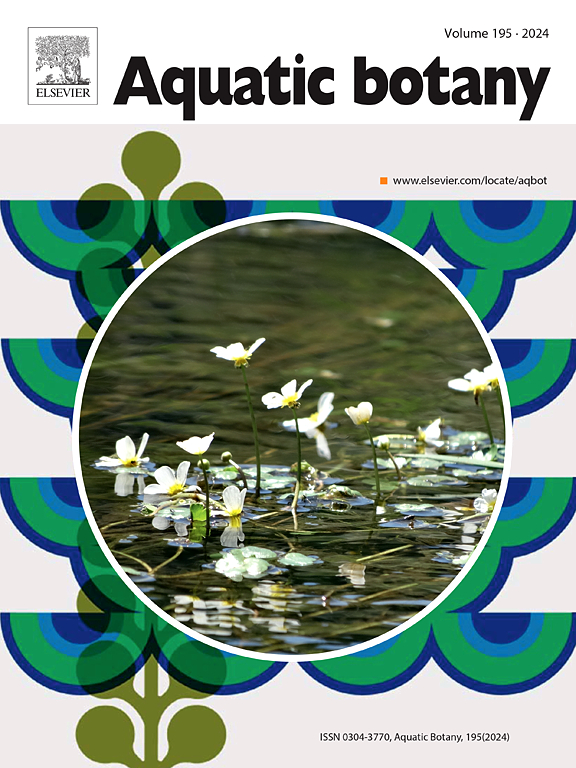Rapid loss of temperate kelp forests revealed by unmanned aerial vehicle (UAV) photography and underwater observations
IF 2.6
4区 生物学
Q2 MARINE & FRESHWATER BIOLOGY
引用次数: 0
Abstract
Climate-related increases in ocean temperature, herbivore abundance, and the frequency of extreme weather events have triggered phase shifts from kelp forests to deforested barrens. While unmanned aerial vehicle (UAV) photography is now an effective method for monitoring marine environments, few studies have used it to detect changes in submerged marine forests. To investigate changes in kelp forests formed by Ecklonia cava under the influence of ocean warming and large typhoons, we conducted UAV photography in two areas (70,755 and 116,199 m2) and underwater visual surveys along two transects off the Manazuru coast of central Japan (35 °09'N) between 2019 and 2020. UAV photography revealed a complete loss of the kelp forests (34,042 and 48,641 m2) there from 2019 to 2020. The underwater visual census revealed a change in benthic communities, with a 57.3 % decrease in Ecklonia cover and an 11.3 % increase in small and coralline algae cover during this period. Based on the wave height during the passage of Typhoon Hagibis in fall 2019, ocean warming since 2008, and the prolonged period of high temperature (> 16 °C) from fall 2019 autumn to winter 2020, we speculated that the phase shift from Ecklonia beds to deforested barrens was due to the synergistic effects of the typhoon, ocean warming, and enhanced fish herbivory due to high temperature. Our results demonstrate the utility of UAV photography for monitoring submerged kelp forests, and combined results with previous studies suggest that the distribution of the phase shifts has expanded to higher latitudes in Japan.
无人机(UAV)摄影和水下观测揭示了温带海带森林的迅速消失
与气候相关的海洋温度升高、草食动物丰富度和极端天气事件的频率引发了从海带森林到森林被砍伐的贫瘠地区的相变。虽然无人机(UAV)摄影现在是监测海洋环境的一种有效方法,但很少有研究使用它来检测水下海洋森林的变化。为了研究在海洋变暖和大型台风的影响下,Ecklonia cava形成的海带森林的变化,我们在2019年至2020年期间在日本中部Manazuru海岸(35°09'N)的两个样带(70,755和116,199 m2)进行了无人机摄影和水下视觉调查。无人机摄影显示,从2019年到2020年,海带森林(34,042和48,641 m2)完全消失。水下视觉普查揭示了底栖生物群落的变化,在此期间,Ecklonia覆盖面积减少了57.3% %,而小型和珊瑚藻覆盖面积增加了11. %。基于2019年秋季台风海贝思通过时的浪高、2008年以来海洋变暖、高温持续时间延长(>;从2019年秋季到2020年冬季,我们推测从Ecklonia床到森林荒芜的相变是由于台风、海洋变暖和高温导致的鱼类食草性增强的协同效应。我们的研究结果证明了无人机摄影在监测水下海带森林中的实用性,并且结合之前的研究结果表明,相移的分布在日本已经扩展到高纬度地区。
本文章由计算机程序翻译,如有差异,请以英文原文为准。
求助全文
约1分钟内获得全文
求助全文
来源期刊

Aquatic Botany
生物-海洋与淡水生物学
CiteScore
3.80
自引率
5.60%
发文量
70
审稿时长
6 months
期刊介绍:
Aquatic Botany offers a platform for papers relevant to a broad international readership on fundamental and applied aspects of marine and freshwater macroscopic plants in a context of ecology or environmental biology. This includes molecular, biochemical and physiological aspects of macroscopic aquatic plants as well as the classification, structure, function, dynamics and ecological interactions in plant-dominated aquatic communities and ecosystems. It is an outlet for papers dealing with research on the consequences of disturbance and stressors (e.g. environmental fluctuations and climate change, pollution, grazing and pathogens), use and management of aquatic plants (plant production and decomposition, commercial harvest, plant control) and the conservation of aquatic plant communities (breeding, transplantation and restoration). Specialized publications on certain rare taxa or papers on aquatic macroscopic plants from under-represented regions in the world can also find their place, subject to editor evaluation. Studies on fungi or microalgae will remain outside the scope of Aquatic Botany.
 求助内容:
求助内容: 应助结果提醒方式:
应助结果提醒方式:


